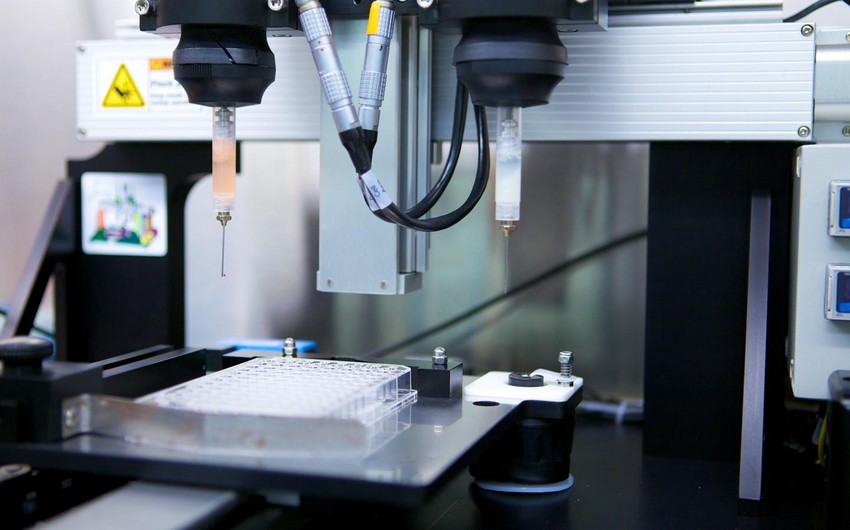Researchers at the Technion–Israel Institute of Technology have developed an innovative technology for growing tissue for transplantation by printing it into a microgel bath as support material, Report informs referring to Phys.
The research, published in Advanced Science, was led by Professor Shulamit Levenberg and her doctoral student Majd Machour from the Faculty of Biomedical Engineering along with Professor Havazelet Bianco-Peled and doctoral student Noy Hen from the Wolfson Faculty of Chemical Engineering and The Norman Seiden Multidisciplinary Graduate program in Nanoscience & Nanotechnology.
Tissue printing is an innovative approach for creating tissue for transplantation. In this technique, also called bio-printing, living cells are embedded in biological ink and printed layer upon layer. The printed tissue then undergoes growth for days or weeks until it is ready for printing.
The Technion researchers thus focused on preventing the uneven shrinkage of the printed tissue in the weeks after printing. The solution was found through changing the medium in which the tissue is printed and grown.
The new concept, print-and-grow, is based on an original medium developed by the researchers—an innovative microgel used as a support material in the process, CarGrow, which is a substance mainly composed of carrageenan (Carrageenan-K) and is produced from red algae. In fact, the new support bath preserves the size of the tissue after printing and prevents it from shrinking and losing its shape.
This process allows reliable and controlled production of functional tissue in the desired size and shape. Since this material is transparent, it makes it possible for the scientists to monitor the development of the tissue through imaging.
The Technion researchers hope the new method will lead to the development of new technologies for bio-printing. The research was supported by an ERC (European Research Council) grant from the European Union.


 https://static.report.az/photo/b73fe617-40b1-3772-acdd-b9aeceeb21e5.jpg
https://static.report.az/photo/b73fe617-40b1-3772-acdd-b9aeceeb21e5.jpg

